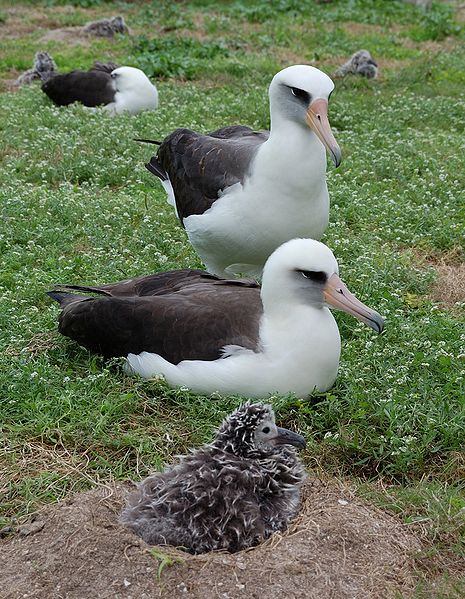The north-west tip of O’ahu is Ka’ena Point. This, the tip of the Wai’anae Mountains, is the one part of the island that’s not reachable by (paved) roads. There used to be both a dirt road and a railroad out here (the railroad for sugarcane transport). Now, the railroad has been removed and the road is extremely non-maintained.
You can actually drive along the non-maintained part of the road for a ways, from either side- fishermen do it. But with a rental car, you probably don’t want to risk it. This car, which apparently broke down at some point, has been out near the end of the road for a few years- every time we go back it’s just a bit more degraded. Last year, for example, the seats were still in decent shape.

A few miles toward the point from either side, the remaining road is fenced off. The reason is that this is one of the last non-developed coastal sites on O’ahu, because of its remoteness. It’s home to several species of threatened plant, and also serves as nesting ground for native seabirds: Laysan albatrosses and Wedge-tailed shearwaters, as well as a pupping spot for endangered Hawaiian Monk seals. The fence is intended to keep predators from slaughtering these ground-nesting birds.

I think Laysan albatrosses are one of the more sophisticated-looking birds: isn’t that contrast between white head, slaty body, and subtly shaded eye mask cool?

Back in the day, I did an internship with the Fish & Wildlife Service on Kaua’i. One of the things I got to do was help band Laysan albatrosses. These are the smallest albatross species, but still have a wingspan that’s up to two meters in length. More importantly for banding, those beaks are razor-sharp; we learned how to get around them pretty quickly! Despite their size, they don’t weigh much, and I strongly remember thinking that they smelled like feather pillows (unlike the Red-footed boobies, who would regurgitate half-digested fish onto you when approached- gross).
At any rate, Ka’ena Point is one of the last places on the main Hawaiian Islands where these beauties nest, at the end of the Wai’anaes.

The day we went out, it was both hot (“Ka’ena” means “the hot”) and the surf was up. We didn’t see any Monk seals, but that just meant that we could go cool our heels in the tidepools.
All in all, this is a good hike on a winter day- there’s pretty much no shade, so it’s nice when it’s a bit cloudy. It can also be pretty breezy out at the point. While it’s generally quite dry, we’d just had rain and there were a lot of mud puddles on the road. It was pretty easy to get around them, though. Take water and a snack, and be prepared to just sit at the point for a while and watch the waves and the albatrosses coming in to land.
One reply on “Hiking to Kaena Point”
[…] the abandoned car did not. To be fair, it looked much more like a car last year. Will there be anything left next time we hike out there? (Photo: Y. Fernandez) Like this:LikeBe […]